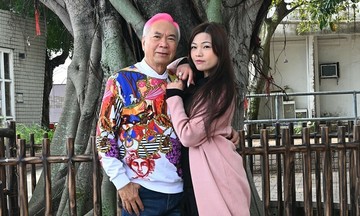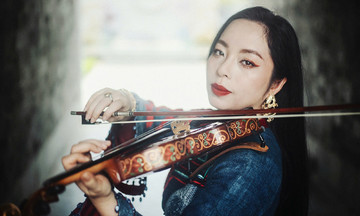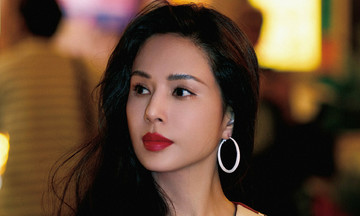As the 100th anniversary of "The Great Gatsby" (1925-2025) is celebrated, the cover art, a standard for the novel throughout its history, is being revisited, according to Artnet. The painting, "Celestial Eyes", by Francis Cugat, is a gouache piece depicting a woman's sad face and red lips floating over a blue sky, seemingly encompassing the space above a brightly lit city below.
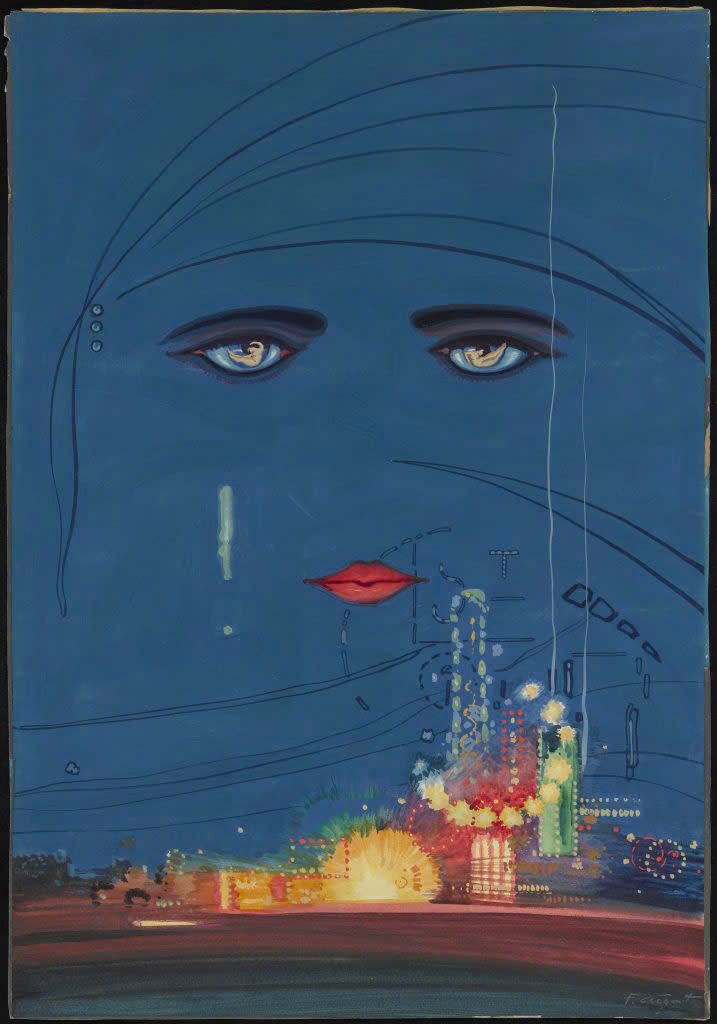 |
'Celestial Eyes' first appeared in 1925. Photo: Artnet |
'Celestial Eyes' first appeared in 1925. Photo: Artnet
Before designing the cover for F. Scott Fitzgerald's then-delayed novel in 1924, Cugat was an unknown artist. According to Smithsonian Magazine, he likely worked from passages of the unfinished manuscript titled "Among the Ash Heaps and Millionaires." In his sketches, Cugat depicted a giant, abstract face hovering over a desolate industrial landscape, not the colorful cityscape reminiscent of Times Square and Coney Island seen in the final version.
When Fitzgerald first saw the cover art, he was in the south of France, having returned from New York to complete the novel. Worried the painting might be used for another book, he wrote to his editor, Max Perkins: "For Christ's sake don't give anyone that jacket you're saving. I've written it into the book.".
In "A Moveable Feast" (1964), Ernest Hemingway claimed Fitzgerald drew inspiration from the cover art for his writing. He recounted: "It looked like the jacket for a terrible science fiction novel. Scott told me not to be put off by it, that it had to do with a billboard along a highway in Long Island, which was an important element in the story.".
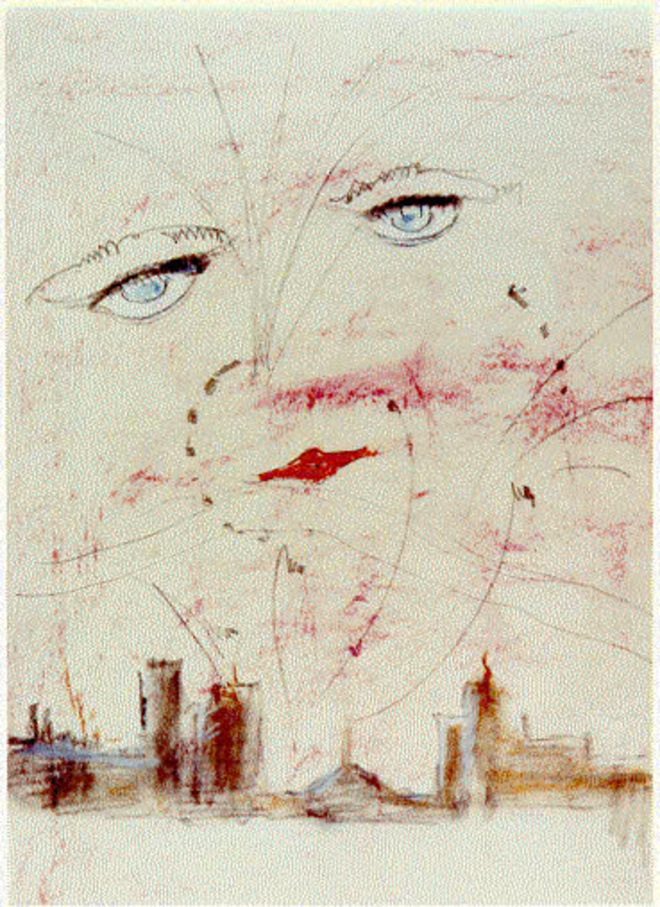 |
One of Francis Cugat's initial sketches. Photo: Artnet |
One of Francis Cugat's initial sketches. Photo: Artnet
According to The Literary Shed, some believe Cugat intended the eyes to represent Daisy, the novel's female protagonist, looking down on New York City. Fitzgerald, however, interpreted them as the eyes of Dr. T.J. Eckleburg on a billboard.
Radiant light is a recurring motif in the novel, symbolizing spectacle, desire, excess, and blindness. Narrator Nick Carraway, passing Gatsby's mansion, describes his impression of the light emanating from the lamps: "At two o'clock in the morning, the whole corner of the peninsula was blazing with light, which fell unreal on the shrubbery and made thin elongating glints upon the roadside wires. Turning a corner, I saw that it was Gatsby's house, lit from tower to cellar.".
Smithsonian Magazine argues that no cover could be more fitting than Cugat's "Celestial Eyes," as "the image and the text seem to fit perfectly together." According to Artnet, along with the iconic novel, Cugat's creation stands as one of the most symbolic book covers of all time.
"The Great Gatsby" is ranked second on Modern Library's list of the 100 best novels of the 20th century. Time magazine also honored it as one of the 10 greatest literary works of all time. The book reflects the extravagance and fleeting nature of America's "Roaring Twenties" or "Jazz Age," as Fitzgerald called it.
The novel was adapted into a film, released in June 2013, starring Leonardo DiCaprio and Carey Mulligan. In 2020, author Farris Smith published "Nick," a prequel to "The Great Gatsby," inspired by Nick Carraway, the narrator of the original work.
'The Great Gatsby' trailer. Video: Rotten Tomatoes Coming Soon
F. Scott Fitzgerald (1896-1940) was an American writer famous for his works about the "Jazz Age," gaining recognition with his debut novel "This Side of Paradise" (1920). Many of his later works, including "Flappers and Philosophers" (1920), "The Beautiful and Damned" (1922), and "The Vegetable" (1923), also made a significant impact.
Francis Cugat (1893-1981), born in Barcelona, Spain, was a painter and graphic designer. From the mid-1940s, he served as a Technicolor consultant for over 60 Hollywood films.
Phuong Linh (according to Artnet)



